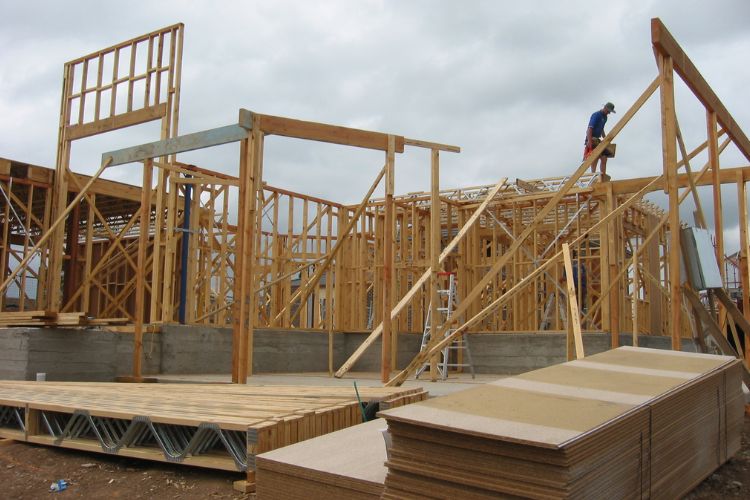
If your current home doesn't suit your needs, you might consider selling or renovating, but what about a knockdown rebuild? Like most people, you might still be paying back the bank after borrowing to buy your home, but it is still possible to knock down and rebuild your dream home, even if you have a mortgage.
So, let's look at the best strategies to get the home you want while staying in your current location and adding enough value to keep your bank satisfied.
People choose to knock down their homes and build from scratch for many reasons. These include:
For more information about knocking down and rebuilding, see our article 'Everything you need to know about a knockdown rebuild'.
It must be said that if you're looking at demolition, you'll need consent from your lender before you go ahead and do this.
Mortgage agreements are legally binding contracts, and if you plan to drastically alter your home in any way, even with a renovation, you must speak with your lender and insurance company first, as this will change the value of your home.
Meet with your lender armed with knowledge by reading our articles 'Why 2024 is a good time to build your dream house' and 'The benefits of a knockdown rebuild in the Illawarra'.

Financing for a knockdown rebuild will need to cover the cost of demolition, any building permits that are required, a new home design and the construction itself, as well as finishing touches such as landscaping. Here are three options to fund your dream home while you still have a mortgage.
By far the most common way to finance a knockdown rebuild, a construction loan allows you to access progress payments throughout construction.
Rather than getting a lump sum from your lender, you only have to pay interest on the amounts drawn. Once completed, your loan converts to a standard home loan.
You can sometimes borrow up to 95% with lenders' mortgage insurance. However, most lenders prefer you to have up to a 20% deposit, just as is required with a normal home loan.
Your loan-to-value ratio is normally calculated on either the projected value of your new home once finished or the value of the land and building contract.
However, construction loans can be complicated. Your bank will normally insist on a valuation or on inspections to ensure the builder is completing work to a high standard, so a lot rests with employing a reputable builder who is in a strong financial position and can prove a clear construction timeline.
Read 'The true cost of building a house in Wollongong' for more information on how much money you will need to build your dream home.
It is possible to subdivide the land on which your home with a mortgage sits to fund a knockdown rebuild. However, it requires careful financial planning.
You'll need to speak with your lender about your subdivision and rebuild plans first and whether they allow it may hinge on whether you want to sell the other lot off, are willing to develop it yourself and if a subdivision will increase the value of your land.
The cost of subdividing can set you back many thousands of dollars. This is also only a viable option if your block can comply with zoning laws and council regulations.
Delays in obtaining permits can quickly chew through your savings, so you may need to consider alternative financing options. Connecting subdivided blocks to utilities can also be costly, especially if it requires relocation of infrastructure.
Therefore, it's important to factor all of these costs into your budget. Take a look at our '6 tips for a successful knockdown rebuild' for more ideas on the best path forward.
Even if you want to demolish your home, the land upon which it sits is still valuable.
If you've owned your home for a few years, an equity loan could be a great alternative to a construction loan to fund a knockdown rebuild. Equity can be calculated by looking at your property value minus how much you still owe on your mortgage.
Your lender will offer you a line of credit to fund the rebuild process as long as you can prove your budget can cover the debt repayment, even if interest rates rise. You can normally borrow from 80 to 95% of the land value.
You may choose to ask your current lender to increase your home loan, or you may choose to refinance and get the best interest rate possible. In either case, you'll need to satisfy the bank's lending criteria.
Unlike a construction loan, which allows interest-only payments until your dream home is complete, with an equity loan, you'll begin to pay interest from the moment you agree to the increased loan.
Read '6 factors affecting the average time to build a house in Australia' to help you weigh up if an equity loan is the best solution for you.

From bank fees to paying architects for a design blueprint for your home, knocking down your existing home and rebuilding can be a complicated and costly process.
However, choosing the right contractors can simplify the construction process and, therefore, make building your dream home a much smoother process. The team at A Class Building and Construction have more than 45 years of combined experience as custom home builders in the Illawarra and Wollongong regions.
As knockdown rebuild specialists, the A Class team will work with you for every step of the process, from planning to council approval through to construction. Call us on (02) 4208 3704 to find out the A Class difference today.